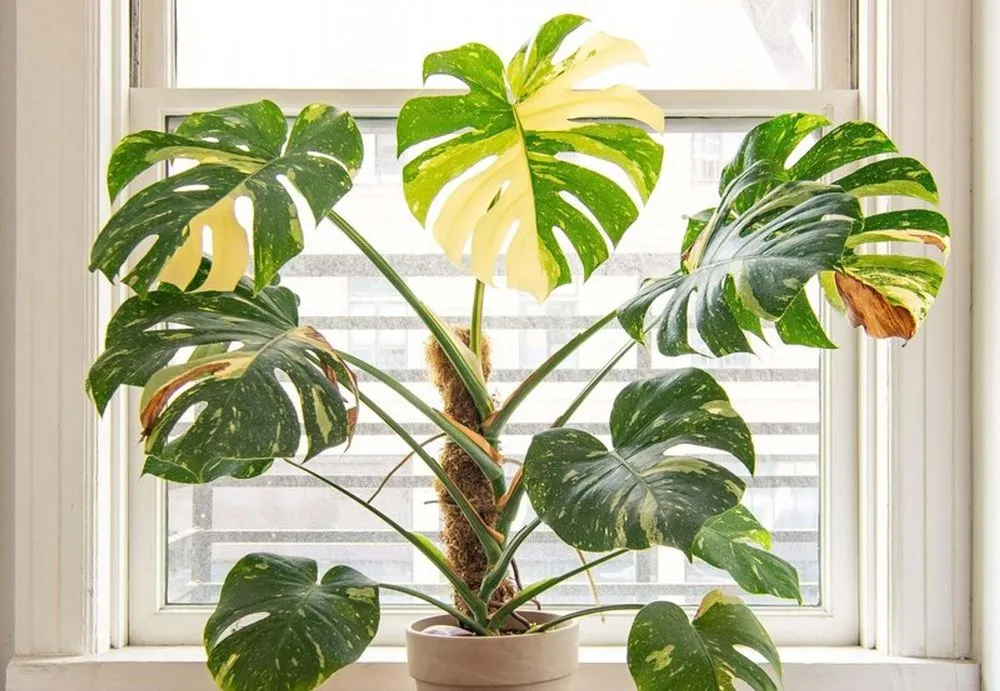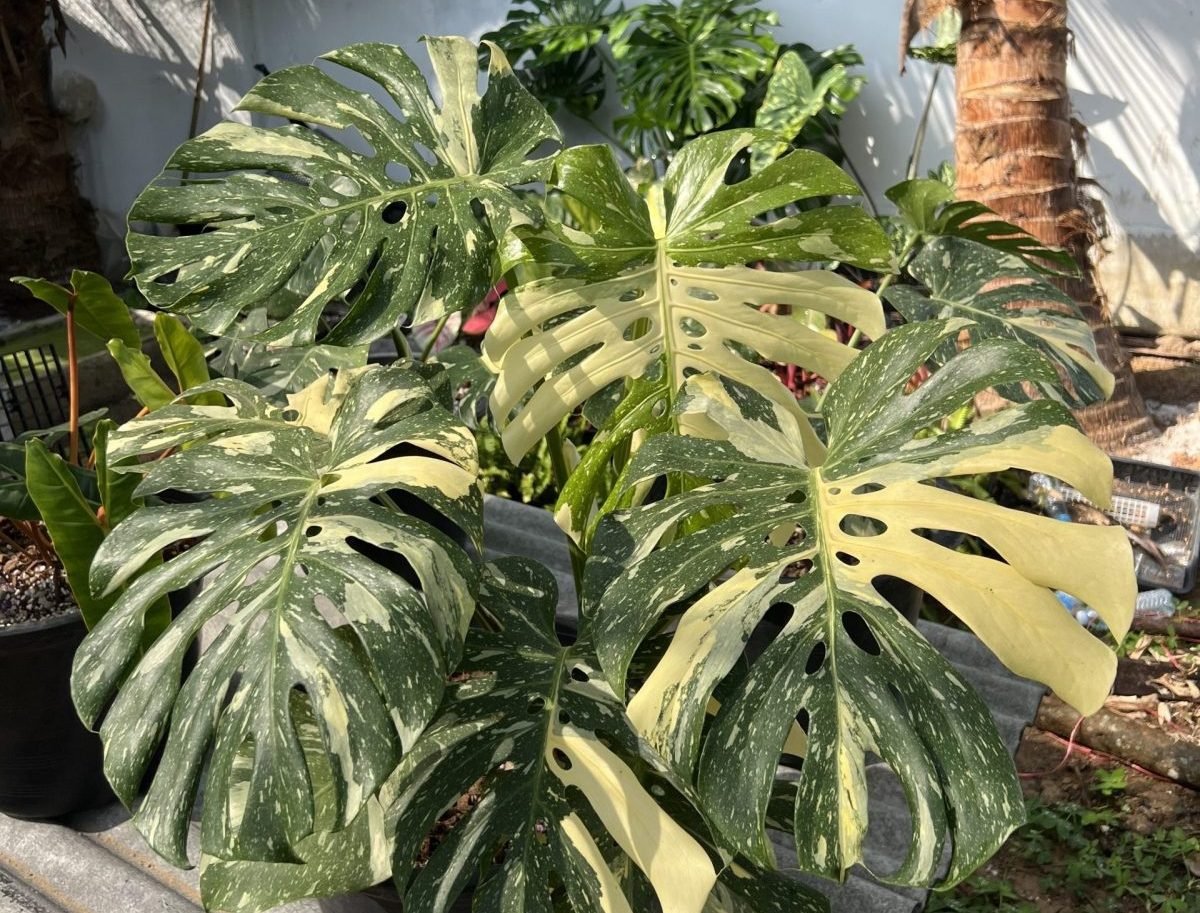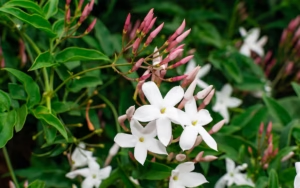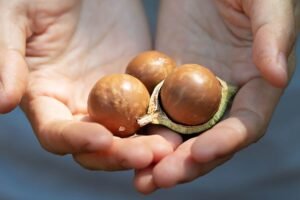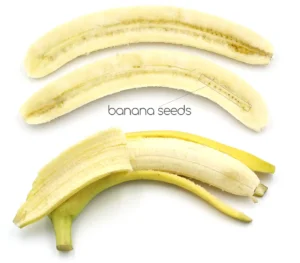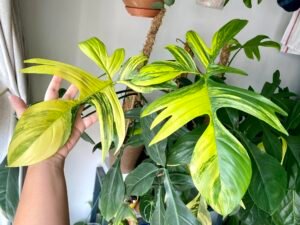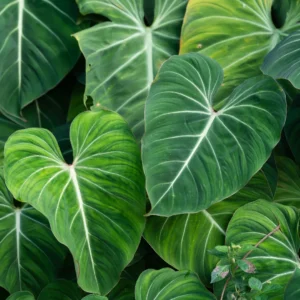The Thai Constellation Monstera is a stunning variegated plant that has captured the hearts of plant enthusiasts worldwide. With its unique cream-colored splashes on lush green leaves, this variety of Monstera deliciosa is a must-have for indoor gardeners. To help your Thai Constellation Monstera thrive, follow this comprehensive care guide.
Quick Facts
| Common Name | Thai Constellation Monstera |
| Botanical Name | Monstera deliciosa ‘Thai Constellation’ |
| Family | Araceae |
| Plant Type | Perennial, evergreen |
| Mature Size | 8-10 feet tall, 3-4 feet wide |
| Sun Exposure | Bright, indirect light |
| Soil Type | Well-draining, peat-based soil |
| Soil pH | Slightly acidic (5.5-7.0) |
| Hardiness Zones | 10-12 (USDA) |
| Native Area | Thailand (cultivated variety) |
| Toxicity | Toxic to pets and humans |
Planting and Transplanting Thai Constellation Monstera
Planting and transplanting Thai Constellation Monstera requires special attention to ensure that the plant adapts well to its new environment.
Planting
- Choose the Right Pot
Select a pot with drainage holes to prevent waterlogging. A terracotta or plastic pot works well. - Prepare the Soil
Use a well-draining potting mix that contains peat moss, perlite, and orchid bark. This combination ensures good aeration and moisture retention. - Placement
Place the plant in a location with bright, indirect light. Avoid direct sunlight, which can scorch the leaves.
Transplanting
- When to Transplant
Repot your Thai Constellation every two years or when you notice roots growing out of the drainage holes. - How to Transplant
-
- Carefully remove the plant from its current pot.
- Loosen the roots gently and remove any old soil.
- Place the plant in a slightly larger pot and fill with fresh soil mix.
- Water thoroughly after transplanting.
Thai Constellation Monstera Care
Proper care is essential for the Thai Constellation Monstera to thrive. Here’s what you need to know:
Light
Thai Constellation thrives in bright, indirect light. Direct sunlight can damage its delicate variegation, while low light slows growth. Place it near an east-facing window or use a sheer curtain to diffuse harsh sunlight.
Watering
Water the plant when the top 2-3 inches of soil feel dry. Overwatering can lead to root rot, while underwatering causes leaf wilting. Use filtered or rainwater if possible, as these plants prefer low-chlorine water.
Humidity
This tropical plant loves high humidity levels, ideally between 60-80%. Use a humidifier or place a tray with water and pebbles near the plant to boost humidity.
Temperature
Thai Constellation prefers temperatures between 65°F and 85°F. Avoid placing the plant near cold drafts or heat sources like radiators.
Pruning Thai Constellation Monstera
Pruning is essential to maintain the plant’s shape and promote healthy growth.
- Why Prune?
-
- Remove yellowing or damaged leaves.
- Control the size of the plant.
- Encourage new growth.
- How to Prune
-
- Use sterilized pruning shears to avoid infections.
- Cut just above a leaf node to stimulate new growth.
- Dispose of pruned material carefully, as the sap can irritate the skin.
Propagating Thai Constellation Monstera
Propagating Thai Constellation is rewarding but requires patience.
- Best Time to Propagate
Spring or early summer is ideal for propagation, as the plant is actively growing. - Methods
-
- Stem Cuttings:
- Cut a healthy stem with at least one node and aerial root.
- Place the cutting in water or moist sphagnum moss.
- Once roots develop (about 4-6 weeks), transfer to soil.
- Air Layering:
- Wrap a node and aerial root in moist moss and cover it with plastic wrap.
- After roots form, cut the stem and plant it in soil.
- Stem Cuttings:
Potting and Repotting Thai Constellation Monstera
- When to Repot?
Repot when the plant becomes root-bound or outgrows its pot. Typically, this happens every two years. - How to Repot?
-
- Select a pot 1-2 inches larger in diameter.
- Use fresh potting mix to provide nutrients.
- Water the plant thoroughly after repotting.
Overwintering Thai Constellation Monstera
Thai Constellation is sensitive to cold weather. To protect it during winter:
- Move Indoors
If the plant is outside, bring it indoors before temperatures drop below 60°F. - Reduce Watering
Since growth slows in winter, water less frequently but don’t let the soil dry out completely. - Maintain Humidity
Use a humidifier or group plants together to maintain humidity levels.
Common Problems With Thai Constellation Monstera
Yellowing Leaves
Yellow leaves often indicate overwatering or poor drainage. Check the soil and adjust your watering schedule.
Browning Edges
Brown leaf edges can result from low humidity or underwatering. Increase humidity and ensure consistent watering.
Slow Growth
Insufficient light is the most common cause of slow growth. Move the plant to a brighter spot.
Common Pests & Plant Diseases
Thai Constellation Monstera is prone to pests and diseases:
- Pests
-
- Spider Mites: Look for webbing under the leaves and treat with insecticidal soap.
- Mealybugs: Wipe leaves with a cotton swab dipped in rubbing alcohol.
- Scale: Remove with a soft cloth and treat with neem oil.
- Diseases
-
- Root Rot: Avoid overwatering and ensure proper drainage.
- Leaf Spot: Caused by fungal infections. Remove affected leaves and avoid overhead watering.
How to Get Thai Constellation Monstera to Bloom
In its natural habitat, Monstera deliciosa produces flowers and fruits. However, indoor Thai Constellations rarely bloom. To encourage flowering:
- Provide Optimal Conditions
Maintain bright, indirect light, high humidity, and consistent temperatures. - Mimic Natural Environment
Use a moss pole or trellis to encourage climbing, as this mimics their natural growth habit.
FAQ
Q: Is Thai Constellation Monstera slow-growing?
Yes, it grows slower than other Monsteras due to its variegation, which reduces photosynthesis efficiency.
Q: Can I grow Thai Constellation outdoors?
Yes, but only in USDA zones 10-12. Protect the plant from direct sunlight and cold temperatures.
Q: Why are my Thai Constellation’s leaves curling?
Leaf curling often indicates underwatering, low humidity, or extreme temperatures.
Q: Is Thai Constellation toxic to pets?
Yes, it is toxic to cats and dogs if ingested. Keep it out of reach of pets.
Q: How do I clean the leaves?
Wipe the leaves with a damp cloth to remove dust and promote photosynthesis.
Read also: Chinese Money Plant: How to Grow and Care for Chinese Money Plant

